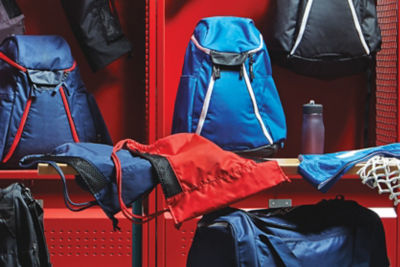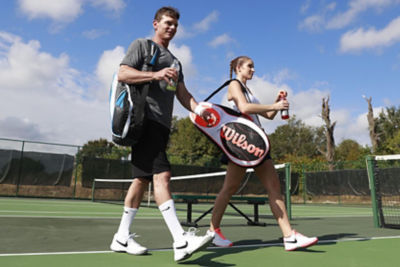Pickleball 101: The Basics of the Pickleball Serve
Learn the four types of pickleball serves you can use in different situations on the court.
When you’ve just started learning how to play pickleball, it can be a struggle just to get the ball in play. You can either undershoot it, knocking the ball into the net, or overshoot it, hammering the ball into the opposite wall.
Wayne Dollard, founder of Level-Up Pickleball Camps, can help by explaining the basics of four common pickleball serves. It’s important to start by understanding the rules governing every serve, which can help you keep the ball in play.
For a pickleball serve to be legal, you need to follow these three rules:
- Use an underhand motion
- Hit the ball below your waist, defined as at or below your navel
- Strike the ball with the paddle face below your wrist
With those rules in mind, these four common serves can give you a wide array of options to get the game going:
JUST-GET-IT-IN SERVE
For beginners who just want to get to the volley, you can’t go wrong with this basic, functional serve.
Start by dropping the ball low and striking it under your waist (wherever is most comfortable) with a high follow through to pop the ball over the net. This serve is forgiving and likely won’t overwhelm your opponent, so you can get a few hits in for the round.
It will still take practice to get the ball into play. As Dollard suggests, “Until you can hit 20 out of 20 in a row, stick with just getting the serve in play.”
Once you’ve mastered that, you can try a more advanced serve.
LOB SERVE
For this more advanced serve, strike the ball just under your waist like before, but this time, follow through a little higher and swing a little faster. This will hit the ball harder and deeper.
“Now your opponents have a choice to make,” Dollard says. They’ll have to choose a return strategy. “You’ll be surprised how many times they hit the ball in the net or they hit it long, trying to compensate for your lob serve.”
POWER SERVE
Once you’ve mastered those starter serves, you can step things up to the more complex power serve. This makes use of the familiar underhand, starting just under the waist and lifting up. But you’ll add in a twist of the torso.
This twist adds power to your serve, increasing speed and putting more pressure on your opponent. This serve may even help you “steal a few points here and there,” Dollard says.
ANGLE SERVE
The angle serve is an advanced technique and can require a lot of practice to perform consistently. Start with the form of the power serve, but then aim to strike the court just beyond the non-volley zone called the kitchen, and just inside the sideline.
This will require a quick response from your opponent, making it useful against slower players. It can also be helpful when the opposing team is using stacking techniques, which usually have both players on one side of the court. Trip them up by aiming for a tight angle on the empty side of their court.
Working on these four types of pickleball serves can help you improve your basic pickleball skills and give you a new set of tools to throw your opponents for a loop.
And now that you know the tricks to serving, learn how return a pickleball serve, too.










